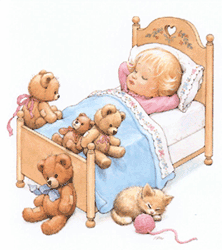Resources for Families
in Graham, Washington 

Here are just a few resources for families in need.
 One stop shop for resources:
One stop shop for resources:
- Pierce County Community Connections. A very large list of resources of all sorts.
 Crisis Help:
Crisis Help:
- Crisis Line - 1-800-576-7764
- DAWN (Domestic Abuse Women's Network) - 425-656-7867
- Family Renewal Shelter - 253-475-9010
- YWCA of Pierce County - 253-383-2593
- Helping Hand House - 253-682-3401
 Homelessness:
Homelessness:
- DSHS Community Services Offices - 877-501-2233
- Homeless Youth in School - Bethel School District - 253-683-6017
- Gateways for Youth and Families - 253-383-4361
- Project Homeless Connect - 253-591-5070
 Child Care or Respite Care
Child Care or Respite Care
- Ashley House (respite & care for medically fragile children) - 253-925-9220
- Child Care Resource & Referral - 253-591-2025
- YMCA Child Care - 253-534-7840
 Child Development, Services, & Programs
Child Development, Services, & Programs
- Birth to Three Development Center - 253-874-5445
- Tacoma/PC Health Dept. Family Support Center - Bethel - 253-683-6850
- Good Samaritan Children's Therapy Unit - 253-697-5200
- Mary Bridge Children's Health Center - 253-403-1400
- South Sound Outreach Services - 253-593-2111
 Clothing, Furniture & Supplies
Clothing, Furniture & Supplies
- Care Net Parenting - 253-770-8607
- Eatonville Family Agency - 360-832-6805
- God's Closet - 253-845-1639
- Puyallup Valley Corps Community Center - 253-841-1491
- St Vincent De Paul - 253-770-0264
- Tacoma Goodwill - Puyallup - 253-848-6620
 Early Learning & Head Start
Early Learning & Head Start
- Pierce County ECEAP & Head Start - 253-798-7379
- Tacoma Early Learning & Head Start
ECEAP - 253-571-1870
Head Start - 253-571-1948
Special Education Preschool - 253-571-1047
Title 1 Preschool - 253-571-1111
 Support for Parents
Support for Parents
- Family Support Center-Bethel - 253-683-6850
- Gateways for Youth and Families - 253-383-4361
 Financial Assistance
Financial Assistance
- All Saints Community Services - 253-848-2000
- ACORN of Pierce County - 253-572-4959
- South Sound Outreach Services - 253-592-2111
 Food Assistance & Nutrition
Food Assistance & Nutrition
- Bikers Against Statewide Hunger (BASH) - 253-531-9600
- FISH Food Banks of Pierce County - 253-383-1816
- Food Stamps: DSHS - 877-501-2233
- The Emergency Food Network - 253-584-1040
- WIC (Women, Infants, Children) - 800-322-2588
 Health Insurance
Health Insurance
- Washington Apple Health for Kids - 877-543-7669
- Washington Basic Health Plan - 800-660-9840
 Medical Services
Medical Services
- Spanaway Community Health Care - 253-847-2304
- Seamar Community Health Center-Puyallup - 253-864-4550
- Tacoma-Pierce County Health Department - 253-798-6500
 Dental Services
Dental Services
- Pierce County Dental Resource List (online only)
- ABCD Program - 253-798-4720
- Bates Dental Clinic - 253-680-7310
- Lindquist Dental Clinic for Children - 253-539-7445
- Seamar Dental Clinic Puyallup - 253-864-4760
 Housing Assistance
Housing Assistance
- Families Unlimited Network - 253-460-3134
- Northwest Housing Development - 253-471-5340
- Pierce County Housing Authority - 253-620-5400
- Helping Hands House - 253-848-6096
 Information, Support or Advocacy
Information, Support or Advocacy
- United Way of Pierce County - 253-272-4263
- Washington PAVE - 800-572-7368
 Transportation
Transportation
- Pierce Transit - 800-562-8109
- Sound Transit - 888-889-6368
 Utilities
Utilities
- Assurance Wireless - 888-898-4888
- AT&T Wireless Lifeline Services - 800-377-9450
- Tacoma Public Utilities
- Washington Telephone Access Program - 800-562-6150